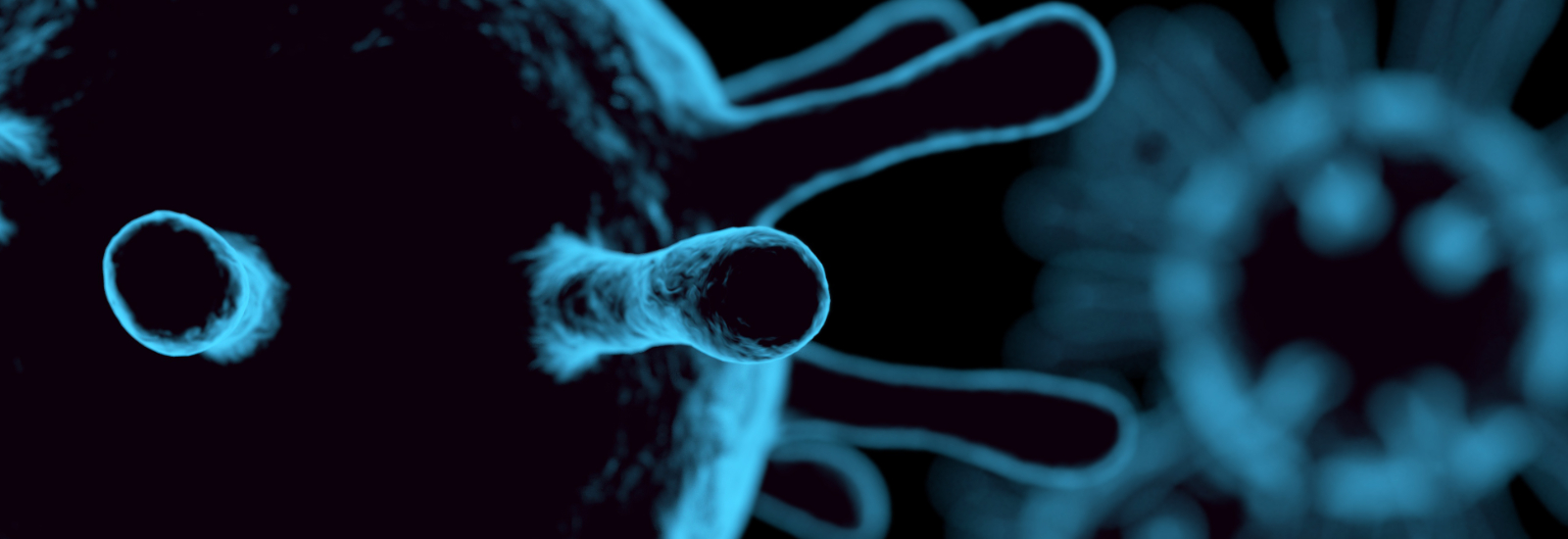Dr Sarah Needs and Dr Sophie Jegouic, biomedical engineers at Reading, share with CONNECTED how they are developing low-cost technologies to speed up tests to detect antibiotic resistance and COVID-19 antibodies.
We recently shared an article with you about the University’s latest fundraising and volunteering campaign that was launched to support Dr Al Edwards’ research into improving the effectiveness of COVID-19 home testing. Dr Edwards’ research focuses on the design of clearer instructions for the use of home tests; however, the creation of such home tests to begin with is reliant on the development of miniature, digital versions of lab tests which can be used in the home.
Dr Needs and Dr Jegouic spoke to CONNECTED about their research into developing miniature and digital ways to perform diagnostic tests outside of a lab, and how these technologies can benefit both determining antibiotic resistance and detecting COVID-19 antibodies.
Defeating antibiotic resistance
Dr Needs – a postdoctoral researcher in Dr Edwards’ lab in Reading School of Pharmacy – explains how she is using a low-cost robot, designed and built by herself and Dr Edwards, to take high resolution images of experiments to determine antibiotic resistance in a matter of hours, instead of days.

Dr Needs explains: “Antimicrobial resistance is a global challenge that threatens the effective treatment of infections caused by bacteria. Currently, most antibiotics are prescribed without knowing whether the bacteria that caused an infection is resistant to the antibiotic. This is because traditional tests to identify this can take 48 hours to confirm a result. Faster diagnostic tools are needed for us to reduce the misuse of antibiotics by selecting the most appropriate antibiotic, dosage and duration of treatment.
“We can identify antibiotic resistance within hours by using micro-devices and dye which changes colour in the presence of live bacteria, but that won’t change colour if an antibiotic has killed the bacteria. We developed the POLIR [Raspberry Pi camera Open-source Laboratory Imaging Robot] to do just this. This system was developed based on designs for 3D printers with the addition of a Raspberry Pi camera.
“Using our design, the Raspberry Pi camera can move around the imaging area and take pictures of the experiment at different locations and times, allowing high resolution time-lapse imaging. This enables over 2,000 individual tests to be screened in a single experiment. In June 2019, we successfully installed a POLIR in Universiti Teknologi Malaysia for use with microbiology tests.
“Using the robot in our lab, we have decreased the amount of time spent in-lab for researchers, while increasing the quality and quantity of so-called kinetic data.
“We have published the design of the robot so anyone can make and adapt it as necessary, and our hope is that other laboratories can implement versions of this robot to reduce the amount of time spent imaging in the lab by researchers and speed up tests.”
Developing COVID-19 antibody tests
Dr Jegouic, a postdoctoral researcher in biomedical sciences, has been applying similar techniques using Raspberry Pi cameras and 3D printed components in the development of rapid COVID-19 antibody tests.

“Currently, most COVID-19 tests detect viral RNA [ribonucleic acid] using a technique called RT-PCR, and can only identify if someone has an active infection. Antibody tests can identify if someone has already had the virus, providing epidemiologic data and a better understanding on how the virus is spreading in the population.
“There are two types of test available; laboratory tests, which tend to be accurate but require a significant amount of equipment and user-training, or rapid tests that are cheaper and can be performed outside of a lab, but tend to be less accurate.
“We have been working on designing and optimising rapid tests that are more portable than laboratory tests, but still as accurate. I am using microcapillary films [tiny test tubes], which Dr Edwards is one of the inventors of.
“The test involves coating micro-devices with a viral protein, such as a COVID-19 protein. This protein alone is not infectious, but allows antibodies in a blood sample to bind to it. The amount of antibody binding can then be measured by the fluorescent output which is linked to the amount of antibody present.
“While the experimental laboratory setups measuring these types of tests require expensive and bulky equipment, we use an imaging setup designed in-house and 3D printed. This can also be used with a smartphone camera, potentially allowing this test to be done outside of a lab.
“Rapid prototyping – the process we use to quickly make physical models using computer-aided designs – means we can develop new bioassays quickly, responding to real world challenges.”
Dr Needs and Dr Jegouic are part of the Biomedical Technology Lab at the University of Reading. Find out more about the lab and their research.
You can also find out more about Dr Edwards’ research into improving the effectiveness of COVID-19 home testing through the IMAGINE campaign.
This article was first published in The University of Reading Connecting Research Blog on 23 June 2020.





